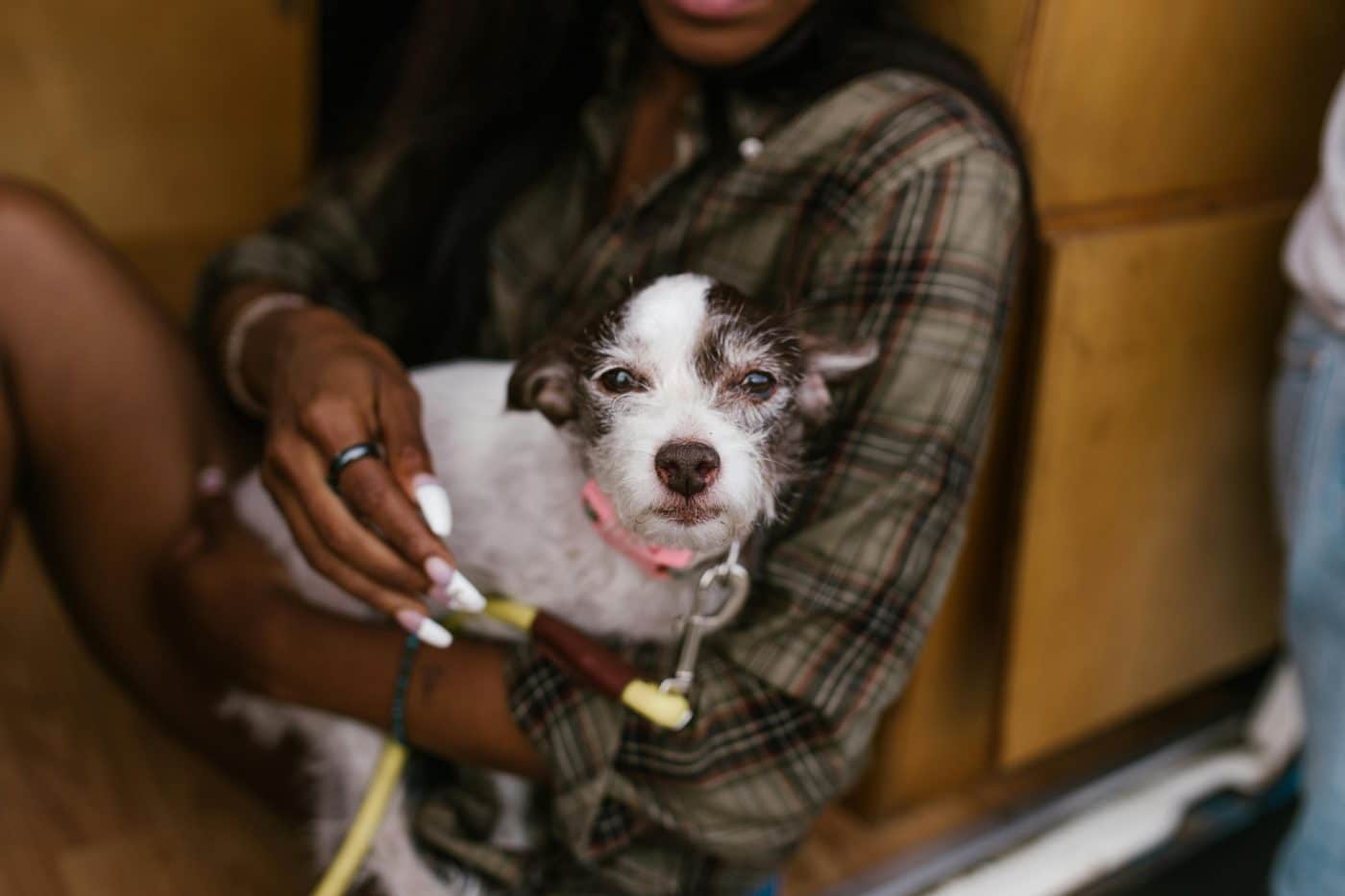Physical Address
304 North Cardinal St.
Dorchester Center, MA 02124
Physical Address
304 North Cardinal St.
Dorchester Center, MA 02124

 Shutterstock
Shutterstock
Dogs are loyal, loving companions and they often depend on us to understand their needs. However, when they are in pain, they cannot talk to us directly, so they use the body’s language, voice and behavioral changes that they are feeling to communicate. As a pet owner, it is important to be aware of these symptoms so that you can provide your dog they need care. Knowing how to explain these fine signals will help your Fury friend be comfortable and healthy.
 Shutterstock
Shutterstock
When your dog hurts, you can notice the changes in their behavior. They may show signs of further withdrawal or annoyance. This change can be due to the discomfort they are feeling and their inability to express it like humans. They may avoid interaction or they seem interested in the activities they are usually enjoying, such as to play or walk.
 Shutterstock
Shutterstock
One of the most common symptoms in the pain that your dog is in is weak or difficult to move. If your dog starts for a foot, it is difficult to get up or feel hesitant to walk, it can indicate joint, muscle or bone pain. If your dog is reluctant to run, jump or climb the stairs, it can be another symptom that they are feeling uncomfortable on their legs, backs or hips. Pay attention to these behavioral changes, as they often point to injury or joint problems like arthritis.
 Shutterstock
Shutterstock
Dogs can lick or chew the areas of their bodies that pain as a way to alleviate discomfort. If you notice that your dog is licking a particular region, especially the pajas or joints, it may be a sign that they are feeling pain. This behavior can also be with redness, swelling or heat in the damaged region. Continuous licking may also indicate that the area has been injured or disturbed, and veterinary care may be required.
 Shutterstock
Shutterstock
When dogs are in pain, they often use vocalization to express their discomfort. Shocking, shaking and even growing up is a common symptom that is not correct. If your dog starts to sound more than usual, especially when they are moving or when you touch certain parts of their body it may indicate pain. Some dogs can even move to protect themselves from touching the damaged areas, indicating that they are feeling weak.
 Shutterstock
Shutterstock
The pain can have a noticeable effect on your dog’s appetite. If your dog refuses to eat or drink suddenly, it may be due to pain. When they feel uncomfortable, dogs often feel nausea, which can make it unpleasant to eat. Reduction of hunger or decreasing to eat is often a sign that seems wrong and may require care for your dog to deal with their discomfort.
 Shutterstock
Shutterstock
Pants for the dog are a general response, especially when they are hot or excited. However, if your dog starts to stumble over the extra amount without a clear reason as exercise, it can indicate pain. Dogs pants to control their body temperature, but they also do the same when they feel in anxiety, stressful or physical discomfort. If your dog walks heavy after rest or after minimal activity, it is important to pay attention to other signs to determine if the pain is caused.
 Shutterstock
Shutterstock
Pain can increase disturbance or aggression in the dog. If your dog becomes more easily excited or even snaps you, it can be the result of pain. Usually a quiet dog can work defensively when hurting, making them less tolerant in touching or operating. It is important to notice these behavioral changes because they may indicate that your dog is trying to protect yourself from further discomfort.
 Shutterstock
Shutterstock
Pain can be clear indicators in shaking or trembling dogs. If your dog starts to tremble or tremble, especially after activity or at rest, it may be due to physical pain. Dogs may tremble in response to stress or discomfort, especially if they experience pain in the muscles or joints. May also be associated with trembling fever or internal pain and if it continues, it is essential to seek veterinary assistance.
 Shutterstock
Shutterstock
When dogs are in pain, they can avoid eye contact as a sign of weakness. Generally, the dogs are involved with their owners through eye contact, but the pain can be pursuing them. A dog in pain can avoid the feeling of threatening or they can avoid their vision to communicate that they don’t feel comfortable. If your dog is acting away or avoided in your sight, it may indicate that they are not feeling well.
 Shutterstock
Shutterstock
Pain can affect the dog’s sleep patterns. If your dog suddenly starts avoiding their normal sleeping stains or feels unstable at night, it may be due to discomfort. Dogs with pain can be difficult to fix or try to find a comfortable position often transfer the locations. Restlessness during the night may indicate that your dog is struggling with physical discomfort or pain that requires attention.
 Shutterstock
Shutterstock
When a dog is in pain, they can find solitude or hide away from others. This behavior is often a natural reaction to feeling ill, because the dogs naturally protect themselves when they become weak. If your dog, who is usually social, starts to hide or withdraw in a quiet corner, it can happen because they are feeling pain. Dogs often go back when they feel weak or under the weather, indicating the need for help.
 Shutterstock
Shutterstock
Extra drling or saliva can sometimes indicate that a dog is in pain. Drinking pain in the mouth, stomach or sore throat may increase. In some cases, excess saliva can also be with other symptoms such as nausea or swallowing. If your dog is shaking more than usual, especially with other crisis symptoms, it can be a sign that they suffer from pain and need to be tested by a veterinarian.
 Shutterstock
Shutterstock
A dog that hurts can become abnormally sensitive to touch. If your dog flinch, moves away, or grools when touching, it may indicate that they are in discomfort. Touching certain areas of the body, such as the joints, legs or abdomen, leads to these reactions. This acute sensitivity may be a clear signal that your dog is dealing with pain and you should avoid pressing on those zones until you consult a veterinarian.
 Shutterstock
Shutterstock
When a dog is in pain, they can usually show isolation in activities that they like. For example, if your dog stops the game with toys, refuses to walk or shows their favorite games, it can be a symptom of pain. Dogs are usually very keen to participate in activities that bring them joy, so lacking in enthusiasm should raise a red flag. Pain often causes the dog’s discomfort they once loved them.
 Shutterstock
Shutterstock
Dogs sleep a lot, but when they are in pain, their sleeping types may change. Some dogs can sleep excessively to avoid movement or because their bodies are trying to cure. In contrast, dogs can become unstable at night in pain, due to discomfort, toss and turning or frequently wake up. If your dog is sleeping more than usual or seems to be having trouble fixing it, it can be a way to fight their pain. Abnormal sleep patterns are often a sign that something is not correct and it should be closely monitored.
 Mid -journey
Mid -journey
It is never easy to see your dog in pain, but recognizing the symptoms can help you provide them with the necessary care. Dogs cannot tell us verbally when they are in pain, so understanding their signals depends on us. By observing behavior, body language and words, you can work quickly to make them more comfortable. The dogs believe in our discomfort and to respond to sympathy. So, the next time your puppy gives you that sad, compassionate look, remember – they just don’t act – they have reached for help.